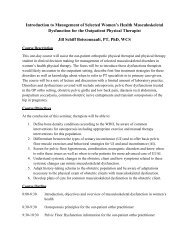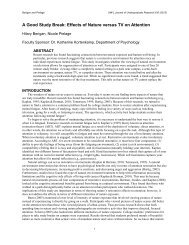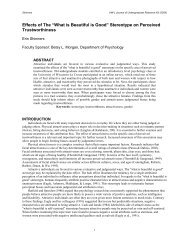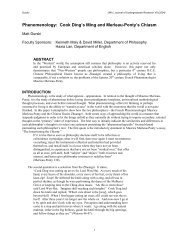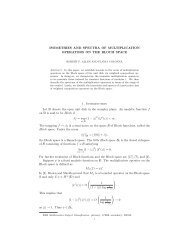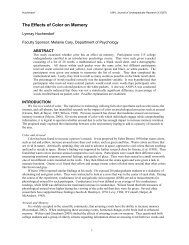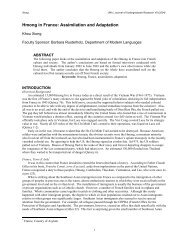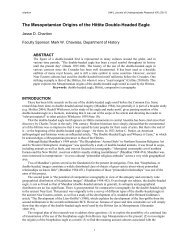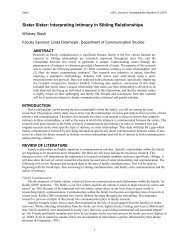A Guide for Terrestrial Gastropod Identification - University of ...
A Guide for Terrestrial Gastropod Identification - University of ...
A Guide for Terrestrial Gastropod Identification - University of ...
You also want an ePaper? Increase the reach of your titles
YUMPU automatically turns print PDFs into web optimized ePapers that Google loves.
Oleacinidae<br />
Kathryn E. Perez, Duke <strong>University</strong><br />
A single species <strong>of</strong> this family is found in the U.S. in Florida; the family is more widely<br />
distributed in the Greater Antilles. This small (6-8 mm) elongate, ribbed snail was previously<br />
called Varicella gracillima (Pfeiffer, 1839). Hubricht (1985) states that this snail is a calciphile<br />
and tends to be found in leaf litter, under rocks or trash, usually in hammocks or under sea grape<br />
plants above beaches. This species also climbs up the trunks <strong>of</strong> trees in wet weather.<br />
TAXON AUTHOR<br />
G-<br />
RANK DISTRIBUTION<br />
Melaniella gracillima (Pfeiffer, 1839) G4 FL<br />
Oreohelicidae<br />
Mark A. Ports, Great Basin College<br />
There are 96 species, several subspecies, and two genera <strong>of</strong> the family Oreohelicidae.<br />
Approximately 50 species and subspecies are considered critically imperiled or sensitive.<br />
Species <strong>of</strong> the genus Radiocentrum are found in southern Arizona, southwestern New Mexico,<br />
and south into northwestern Chihuahua. The genus Oreohelix is centered in the mountain states,<br />
south to western Chihuahua, north to British Columbia and Alberta, and east to the Black Hills <strong>of</strong><br />
South Dakota. This includes the states <strong>of</strong> Colorado, Wyoming, Utah, Nevada, Montana, and<br />
Idaho.<br />
The genus Oreohelix range in size from 9 mm to 2.5 cm in diameter. They typically have<br />
one to two brown, supra-peripheral bands circling the whorls, some with indistinct bands, to no<br />
bands at all. Most species have different degrees <strong>of</strong> color varying from brown to blackish red.<br />
38



